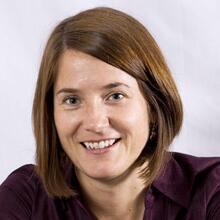Surviving Anti-Modernism
A word of warning to book reviewers, especially for Catholic periodicals like this one: what you say about what Catholic authors are saying about our current cultural reality may someday become fodder for a critical construction of what is not being said, or more precisely, what is forbidden to be said, about the same in more theological and ecclesial circles. In other words, whether you know it or not, you’re more than simply commenting about what’s going on in Catholic books. You’re building the distinctively American Catholic culture of the first half of the 21st century.
I learned this lesson from Una Cadegan’s masterful historical examination of American Catholic literary culture in the first half of the last century, with particular focus on the years between 1917, when canon law prescribing censorship of Catholic literature was promulgated, and 1966, when books on “the Index” were no longer forbidden. While this period has recently received quite a bit of retrospective attention in popular culture with the pending centennial of the Great War, it has long been overlooked by theologians like myself because of the wet blanket Pope Pius X threw on theological innovation in his 1907 encyclical “Pascendi Dominici Gregis,” which unequivocally rejected modernism and any engagement with it. Even the groundbreaking social encyclicals of the time were susceptible to its stifling effect.
Theological discourse may have been truncated, but Cadegan mines a variety of sources to reveal public and private conversations among those in the Catholic literary world awash in insightful engagement with modernism. She sifts through book reviews and letters to the editor in Catholic periodicals like America and Catholic World; letters between Catholic editors and authors; essays in literary journals, symposia, annotated anthologies and library guides; lecture notes of Catholic professors; biographies of Catholic writers; and case studies of censorship. In all of these unexpected places, Cadagen exposes a pointed engagement with theological questions that shaped the age and primed the pump for the Second Vatican Council—magisterial authority vs. the authority of personal conscience, engagement with secular society and the orientation of the moral life.
Throughout the book, Cadegan successfully defends her central thesis that Catholic literary culture stood squarely in the no man’s land between modernism and Catholicism and offered a space for Catholics to encounter self-reflectively and embrace distinctively the tensions between the two. She begins by naming the sources and contours of the Catholic aesthetic that guided critical engagement with literature and gave rise to the tools Catholics used to engage the distinctively American literature of the time: the obligation to seek and maintain unity within the American Catholic community through an emphasis on the communal dimension of human experience, the imperative of literature to awaken moral responsibility given the scriptural roots of story telling and the timelessness of the Catholic tradition when oriented by the Thomistic transcendentals of goodness, truth and beauty. She then maps the contours of the theological challenges of modernism and identifies four pairings which Catholic literary thinkers used in the classic Catholic “both/and” fashion in order to navigate rather than reject or ignore modernism: individualism/community; iconoclasm/orthodoxy, innovation/repetition and openness/closure.
Cadegan’s implicit recognition that the Catholic Church’s history of censorship, particularly in Hollywood during this period, provides a significant counter-argument to her thesis in one of the most fascinating sections of the book. Here she joins others in the field of American Catholic history in offering a detailed account of the way censorship actually functioned in the lives of all sorts of American Catholics—bishops, publishers, pastors, writers, readers, movie-goers—during this period.
Pulling on her previously explicated Catholic aesthetic, as well as a variety of case studies and interviews, she demonstrates how even in an assumed anti-intellectual climate of censorship, American Catholics engaged in literary culture created a “flourishing rhetoric of individual responsibility and communal solidarity that helped to bridge the gap between Counter-Reformation church discipline and modern American understandings of the mature ethical self.”
Since it is the first of its kind to consider this historical period from a Catholic literary perspective, All Good Books Are Catholic Books is a must read for cultural historians; for theologians of liturgical, aesthetic or feminist persuasions; for literary scholars of American modernism or American Catholicism; or for those with even the faintest of memories of the aftermath of this period in the American Catholic Church. Ever wonder how the Legion of Decency exercised so much authority during the “Golden Age of Hollywood” as to command the recitation of a pledge after sermons in parishes around the country and to dictate the fate of Roberto Rossellini’s 1950 film “The Miracle” because of his affair with Sister Mary Benedict (the characters played by Ingrid Bergman) before fading quietly into the lore of American Catholicism? Or how conscience came to trump canon law in creative self-expression as well as religious liberty in the 1960s? Catholic literature and popular culture, and more importantly the people who commented on them, hold the answers.
Cadagen reminds us that it was not simply theologians who primed the church’s intellectual pump for Vatican II’s aggiornamento. Those who were writing about writing that engaged modernism also cracked those hermetically sealed windows. Moreover, she broadens our understanding of American Catholic history beyond the familiar arch of the immigrant experience to an equally compelling Catholic coming of age story set in America’s predominantly Protestant literary culture. While the plotlines are similar, new players—cultural commentator Daniel Lord, S.J., Motion Picture Herald owner Martin Quigley and National Organization of Decent Literature head Bishop John F. Noll come to the fore and familiar figures—like the iconic Jesuits John Courtney Murray and William Lynch or Flannery O’Connor and Graham Greene—play new roles.
If all of the good books are indeed Catholic, then Cadagen’s is quite Catholic.
This article also appeared in print, under the headline “Surviving Anti-Modernism,” in the October 20, 2014, issue.








